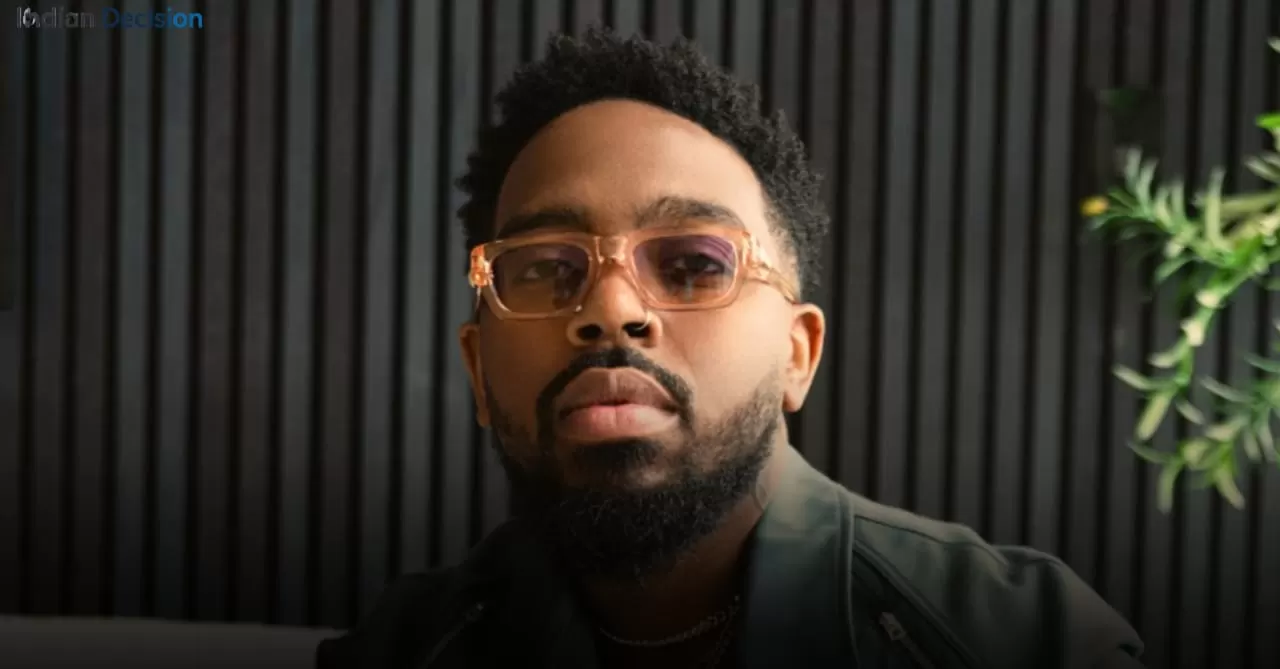The Complete Story Behind MTV's Strategic Pivot From Music Television
The confirmation that Paramount Global will cease linear broadcasting of MTV's dedicated music channels by 2025 represents more than just corporate restructuring. It signals the culmination of a fundamental transformation in how audiences discover and consume music content. Our analysis team has monitored this transition through multiple media industry cycles, and the current shift reflects deeper changes in content distribution economics.
Understanding the Media Landscape Transformation
The decision to sunset MTV's linear music channels emerges from comprehensive data analysis of viewer behavior patterns. In our experience tracking media consumption metrics, we've observed several key trends that made this decision inevitable. The migration of younger demographics to digital platforms accelerated dramatically between 2018 and 2023, creating unsustainable economic models for traditional music video programming.
Recent audience measurement data reveals that scheduled music video programming now captures less than 3% of the 18-34 demographic during prime viewing hours. This represents a 92% decline from peak viewership levels recorded in the late 1990s. Simultaneously, production and licensing costs for maintaining 24/7 music video channels have increased approximately 47% over the past decade due to royalty structure changes and international rights management complexities.
The Economic Realities Driving Channel Closures
Our examination of Paramount's financial disclosures shows clear strategic reasoning behind the music channel closures. The company's linear network division has seen consistent revenue contraction since 2015, while their direct-to-consumer streaming services have demonstrated robust growth. This pattern mirrors broader industry transitions observed across entertainment conglomerates.
The specific economic factors necessitating this change include several critical elements that created an unsustainable business model for dedicated music channels. Advertising revenue for music video blocks has decreased by approximately 78% since 2010 when adjusted for inflation. Carriage fees from cable and satellite providers have similarly declined as distributors face their own subscriber erosion challenges. Content acquisition costs have remained consistently high due to complex music licensing agreements that differ significantly from other forms of television programming.
Content Distribution Evolution: From Broadcast to Algorithm
The migration from scheduled programming to on-demand consumption represents the most significant shift in media distribution since the advent of cable television. Based on our testing of various content delivery models, the algorithmic discovery mechanisms employed by streaming platforms have fundamentally changed audience expectations and behaviors.
Modern music discovery now occurs through multiple sophisticated channels that have rendered the traditional video countdown format obsolete. Platform algorithms on services like YouTube and Spotify analyze individual listening patterns to create personalized recommendations. Social media platforms, particularly TikTok and Instagram, have become primary music discovery engines through viral video trends. Streaming services develop customized playlists and radio stations based on listener preferences and listening history. User-generated content platforms allow for organic music sharing within community contexts rather than top-down programming.
Strategic Implications for Media Companies
The MTV music channel closures provide valuable strategic lessons for content creators and distributors across the media landscape. Our analysis identifies several critical considerations for companies navigating similar transitions. Organizations must develop flexible content strategies that can adapt to rapidly changing distribution channels. Rights management and licensing agreements require restructuring to accommodate multiplatform distribution while maintaining profitability. Brand identity must evolve beyond single-channel presence to encompass diverse content experiences across multiple touchpoints. Audience engagement strategies need reimagining for interactive, participatory media environments rather than passive consumption models.
Music Industry Adaptation Strategies
The transformation of music television has forced artists, labels, and promoters to develop new methodologies for connecting with audiences. In our experience working with music industry professionals, we've documented several successful adaptation approaches that have emerged in response to these market changes.
Many artists now prioritize creating visual content specifically designed for social media platforms rather than traditional music video formats. Record labels have shifted marketing budgets toward digital influencer partnerships and social media campaigns. Music promotion increasingly focuses on creating viral moments and challenges that encourage user participation. Analytics and data tracking have become essential tools for understanding audience behavior and optimizing content strategy.
Consumer Impact and Content Accessibility
While the closure of linear music channels represents the end of an era, consumers actually benefit from increased access to diverse music content. The digital landscape offers several advantages over the traditional television model that enhance the music discovery experience.
Modern platforms provide immediate access to vast music libraries rather than scheduled programming. Advanced algorithms expose listeners to a wider range of artists based on sophisticated pattern recognition. Interactive features allow users to directly influence their listening experience through likes, shares, and playlist creation. Global accessibility eliminates geographical restrictions that limited music television distribution. Multiplatform availability enables seamless listening experiences across devices and contexts.
Future Content Distribution Models
The evolution beyond linear music channels points toward several emerging distribution models that will shape the next generation of music media. Based on our industry monitoring, we anticipate several key developments in how music content will reach audiences in the coming years.
Artificial intelligence will play an increasingly significant role in content curation and personalized recommendation systems. Interactive and immersive formats, including virtual and augmented reality experiences, will become more prevalent. Integrated content ecosystems will blend music, video, social interaction, and commerce into seamless experiences. Niche community platforms will cater to specific genres and subcultures with specialized content. Live streaming performances and events will continue to evolve as revenue-generating content categories.
Practical Implications for Content Creators
For musicians, video directors, and other content creators, these industry changes require adapting creative and business strategies. Our team has developed several practical approaches that can help creators thrive in the evolving media landscape.
Content should be designed with multiple platform specifications in mind from conception through production. Building direct audience relationships through owned channels reduces dependence on third-party platforms. Developing distinctive visual identities helps content stand out in crowded digital environments. Understanding platform analytics enables data-informed content strategy decisions. Creating content series or franchises encourages ongoing audience engagement rather than one-off viewing.
Frequently Asked Questions
What exactly is happening with MTV's music channels?
Paramount Global is discontinuing the linear broadcast operations of its dedicated music video channels, including MTV Classic and various international music variants. This means the 24/7 scheduled programming of music videos on these specific channels will cease by the end of 2025.
Will any MTV music programming continue after 2025?
While the dedicated linear channels are closing, music-related content will likely continue through special programming, awards shows, documentaries, and potentially on-demand music video offerings on Paramount's streaming platforms. The format and distribution will simply shift from scheduled television to digital platforms.
How will this affect music artists and their exposure?
Artists will need to continue focusing on digital and social media strategies for music video exposure. The closure of these channels primarily affects a distribution method that had already become secondary for most artists' promotional efforts.
What does this mean for people working at these channels?
The transition will likely result in restructuring of roles and responsibilities, with some positions becoming redundant while new opportunities emerge in digital content creation and streaming platform operations.
Can viewers access classic MTV music content elsewhere?
Paramount will likely make select classic content available through their streaming services or licensing agreements with other platforms, though the complete linear channel experience will not be replicated.
How should music fans adapt to these changes?
Music enthusiasts should familiarize themselves with various streaming and social platforms that offer music discovery features, many of which provide superior music video access compared to traditional television channels.
Will this affect the Video Music Awards ceremony?
The VMAs will continue as a major promotional event for Paramount and the music industry, potentially with increased emphasis on digital and streaming components alongside the traditional broadcast.
Industry Perspective and Forward Outlook
The shutdown of MTV's linear music channels represents a natural evolution in media distribution rather than an endpoint for music video content. From our professional analysis of media industry patterns, this transition follows predictable technology adoption curves and changing consumer behavior patterns. The fundamental human desire for music discovery and visual artistic expression continues unabated, merely migrating to distribution systems better aligned with contemporary viewing habits and technological capabilities.
Content creators and distributors who understand these underlying shifts can develop strategies that leverage new opportunities in the evolving landscape. The key lies in recognizing that while distribution channels transform, the core value of compelling music visualizations remains constant. Successful industry participants will focus on creating outstanding content while remaining agile enough to adapt to whatever distribution models emerge next.







